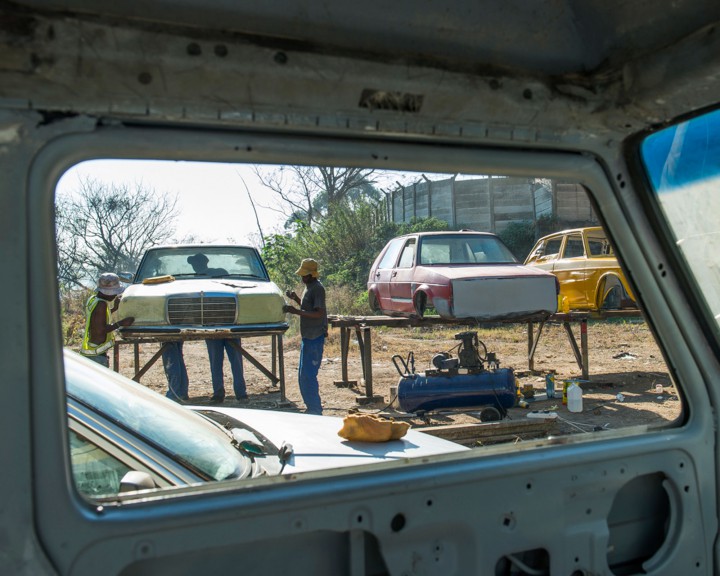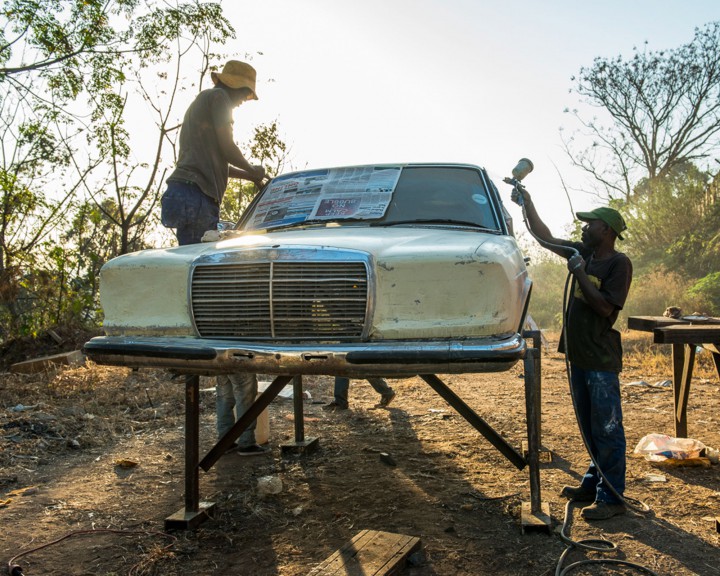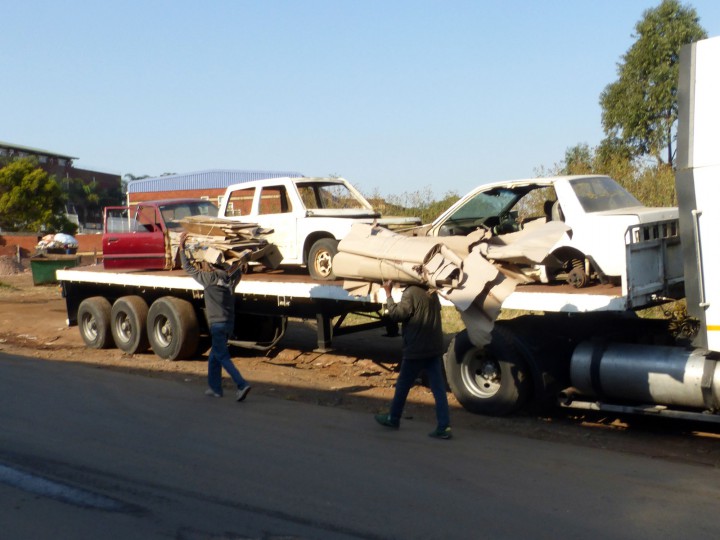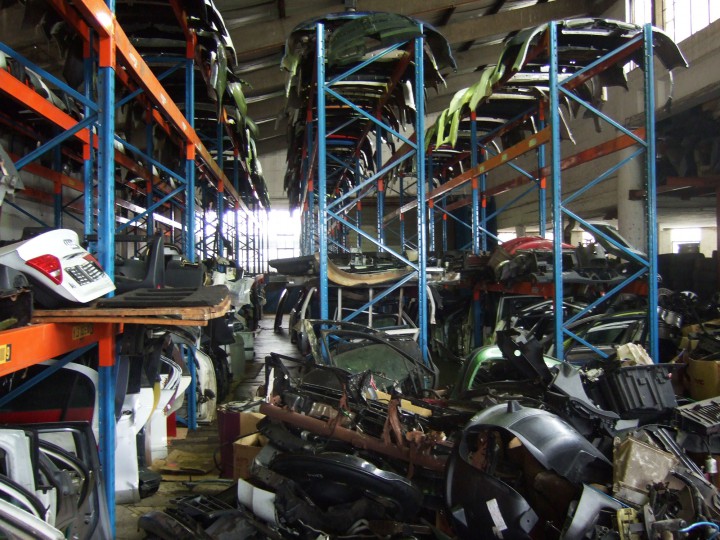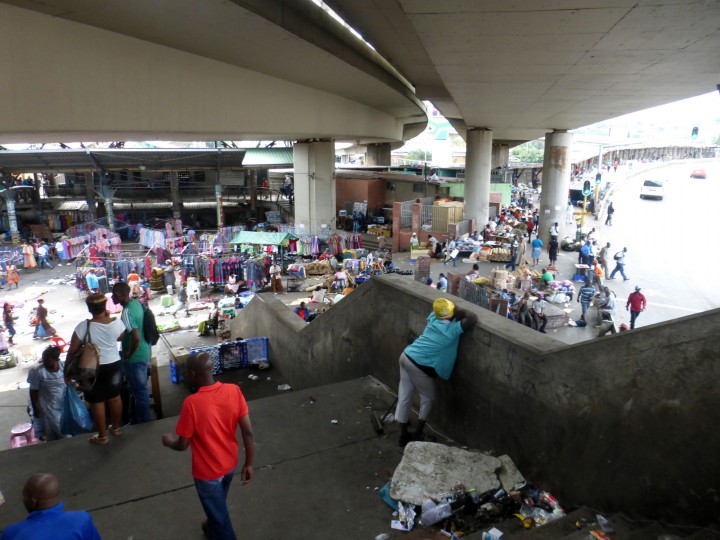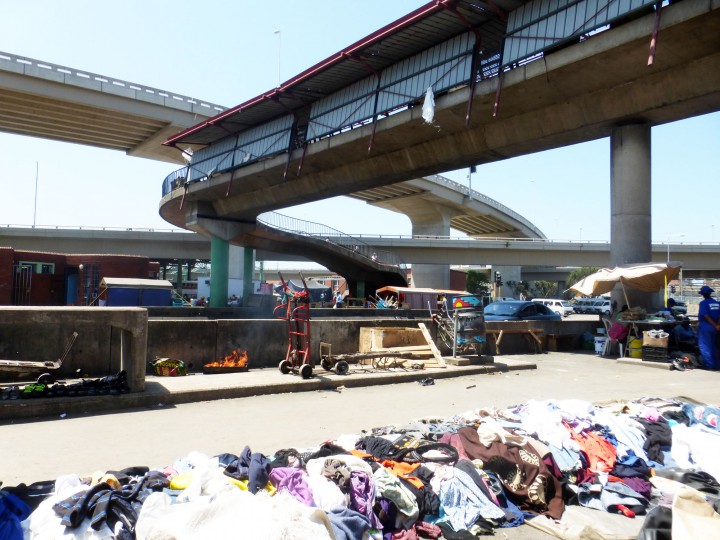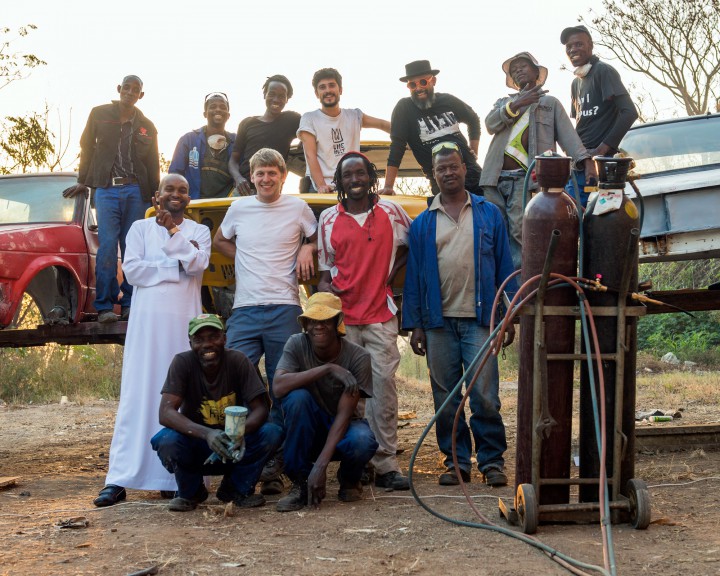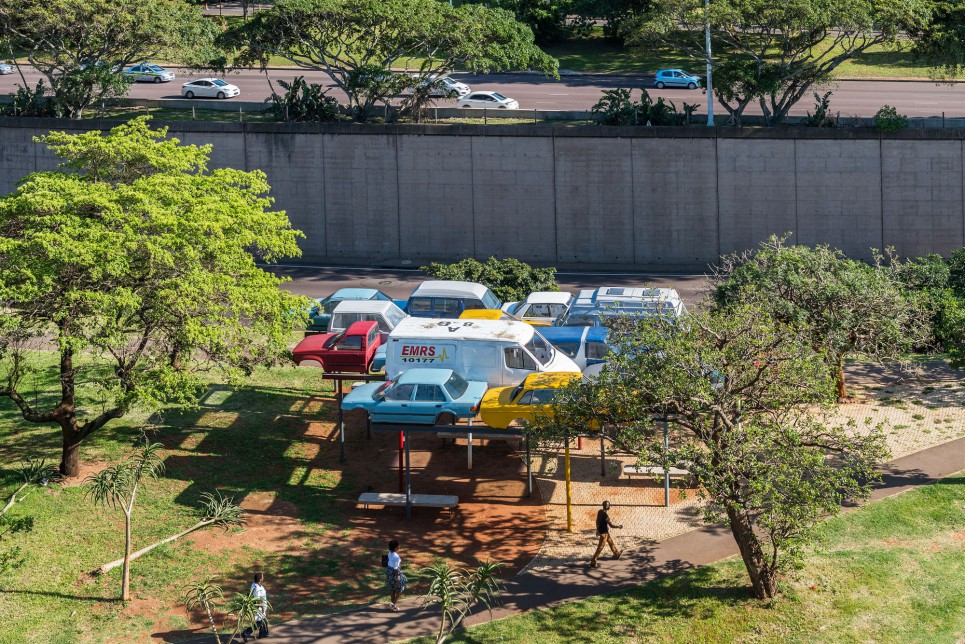RUSH HOUR REST STOP: Acknowledging everyday practices
invited by Goethe Institute South Africa
in cooperation with Dala Collective, Durban
images by Roger Jardine
Rush Hour Rest Stop is shelter built out of gutted shells of old cars. We were invited to Durban with no specific task or space given.
When visiting Durban for the first time, we met Doung, a Durban-based artist and architect focusing on post-apartheid spatial practices. He took us on a city walk, which brought us to the highway, which is the main entrance point into Durban. Parallel to this lies a pedestrian path that connects the townships in the West to Warwick Junction, a knot of underpasses and overpasses, tunnels, train and bus station, where a massive and bustling informal market lives and breathes. This is what best represents the African city.
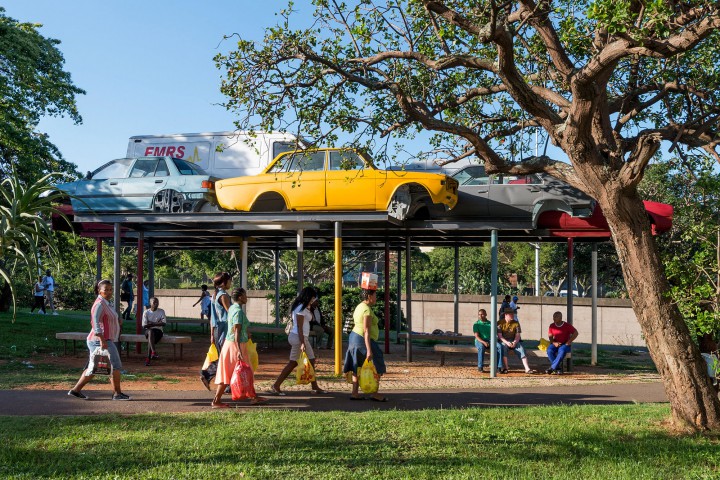
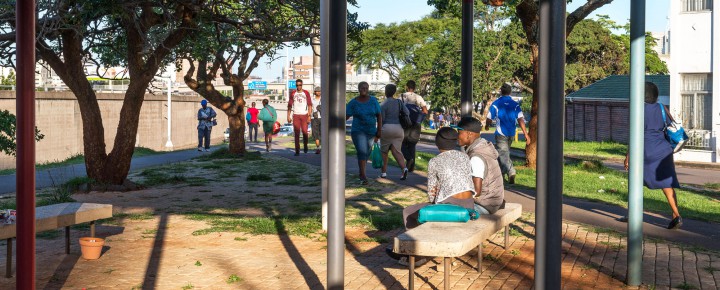
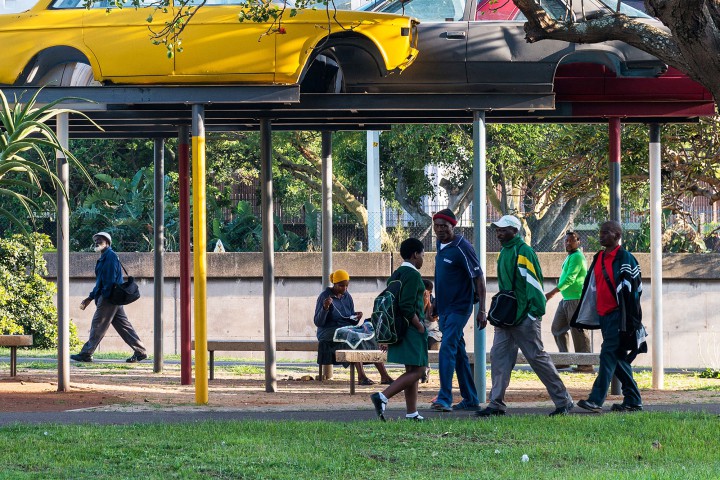
Durban is a city on the move; overpopulated by cars, pedestrians, taxis. But people don’t stop in the city. There are no places to stop. It is not safe to stop. Despite (or maybe because of) all the movement, Durban remains fractured, apart, divided. Still 20 years after apartheid the spatial separation of the city is very intense.
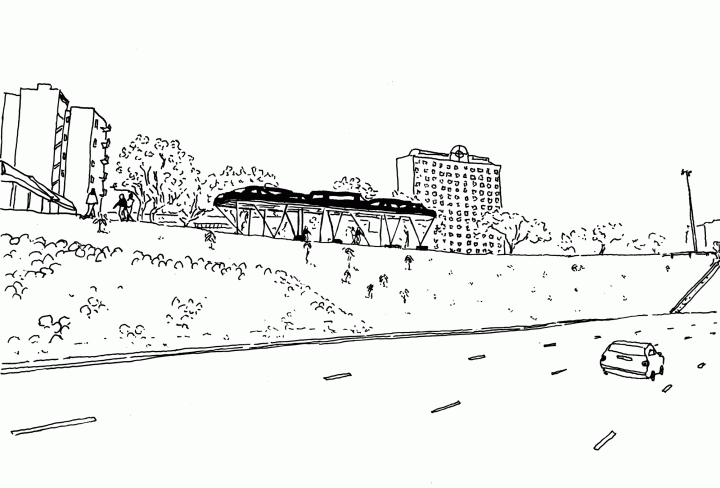
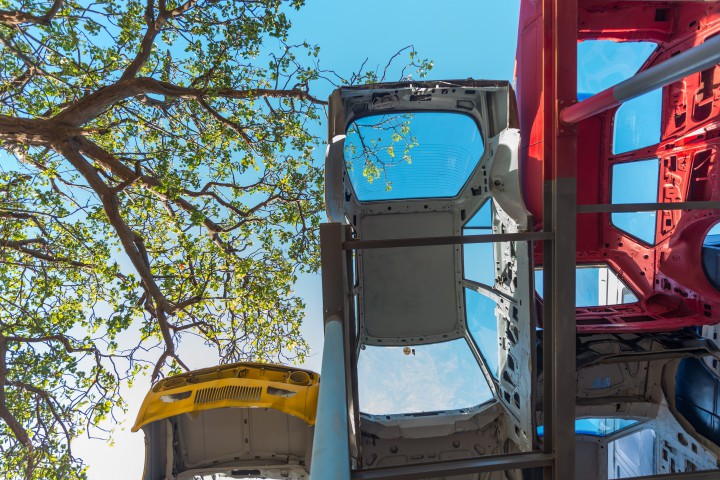
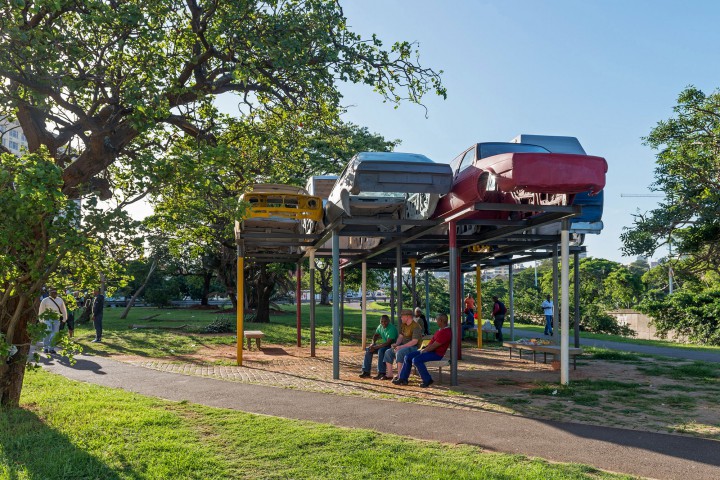
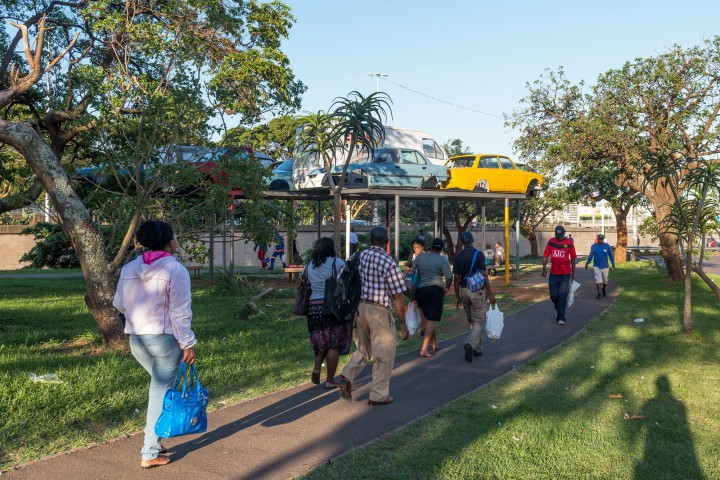
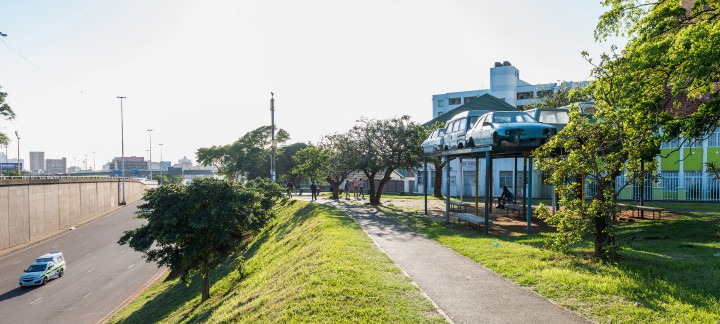
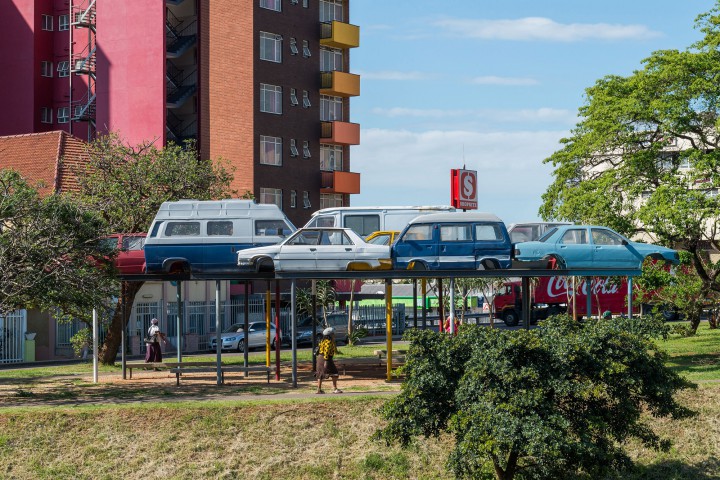
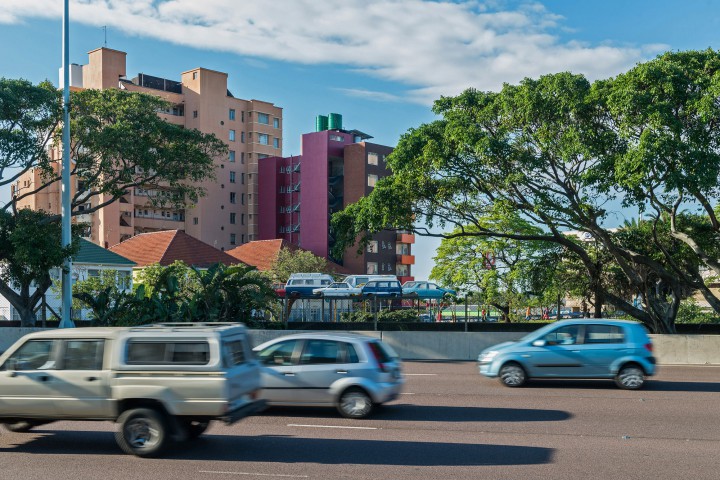
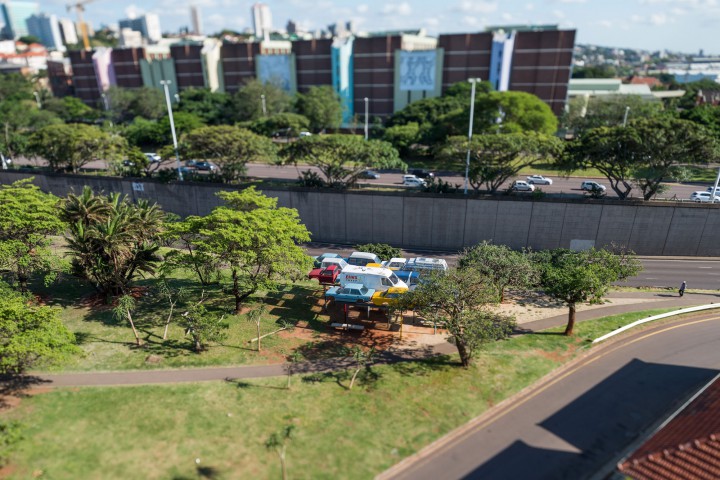
So thousands of people walk up and down this pedestrian path, in and out of the city, a dirt path that meanders along the highway, between lanes, through green patches, under bridges, to the overwhelming sound of moving cars. The site we picked, is one of these green patches, a leftover triangle between the highway and the exit roads. The site is very active, as it was a meeting point for many flows of movement. There is an informal stop for the mini taxis on one side, the pedestrian path on the other, and also a meeting point at the highway level for hitchhikers going west.
The basic idea of the project is to acknowledge all these forms of informal transport and make a physical manifestation of this; to create a station for informal traffic, a hub, a rest stop, a shelter. The crown of the simple roof-and-beam structure is made from the gutted shells of old cars sourced from the city’s many scrapyards and sort of resembles a five-lane traffic jam. At the same time, the roof is very functional – the car shells protect against sun and rain, the benches invite to rest, stop and remain and should be seen as just another piece of infrastructure to the city.
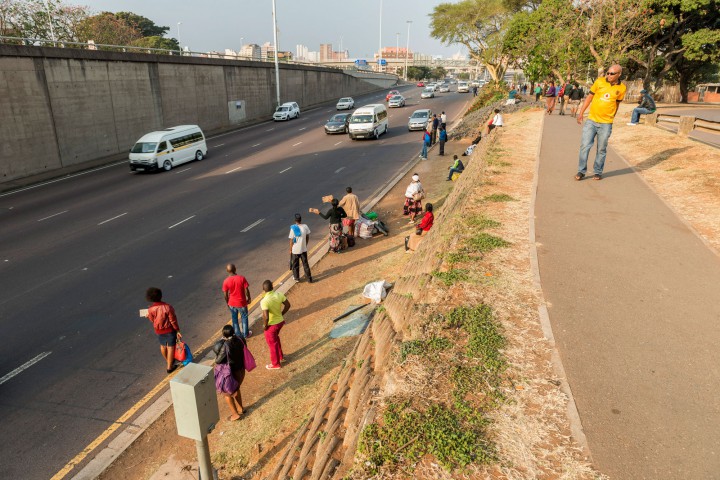
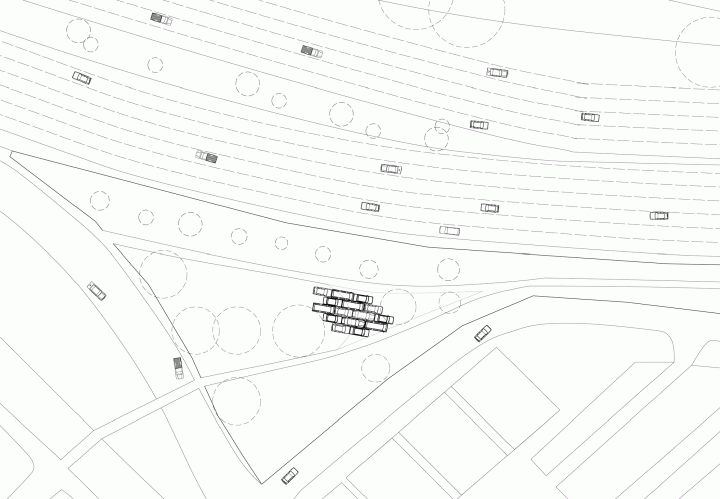
The car-roof is a reference to both, Durban’s rampant car culture and to the fact, that only a small part of the population owns and uses a car. The idea was to turn this equation around.
Sourcing cars immersed us in the back stage of the city. The scrapyards and small industries – that hide away in the outskirts – collecting and salvaging all they can, keeping the material flow alive and to a certain extent, sustainable.
This brought us to Chatsworth, an Indian township outside of Durban, a manufacturing ecology populated with small industries, workshops, scrapyards and hardware stores. A machine of permanent hustling and improvisation. Together with a team of panel beaters and all around craftsmen we recovered and renovated the car shells.
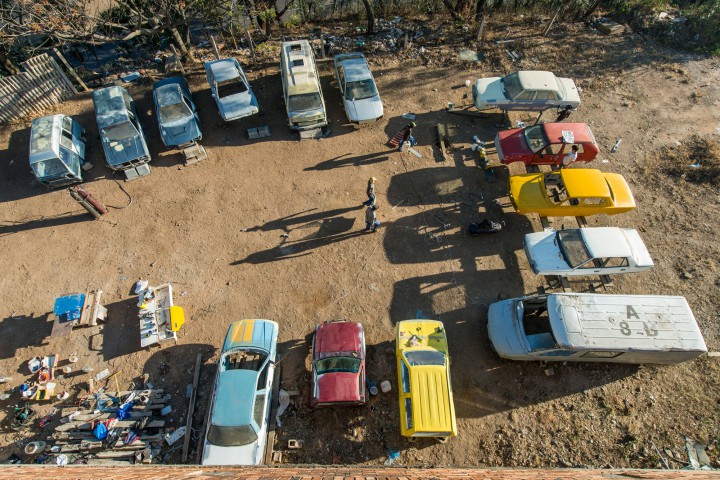
under construction
